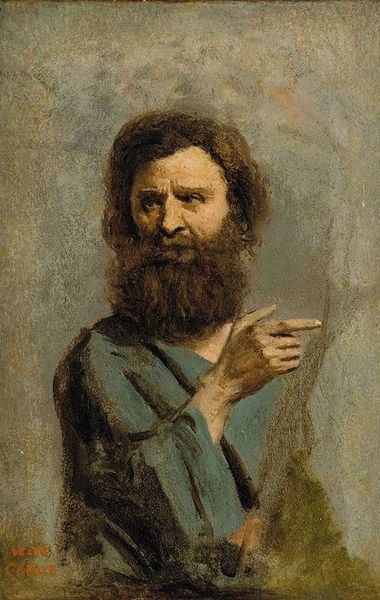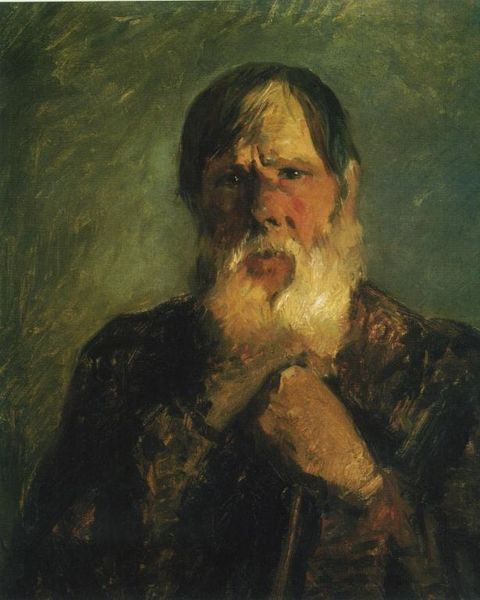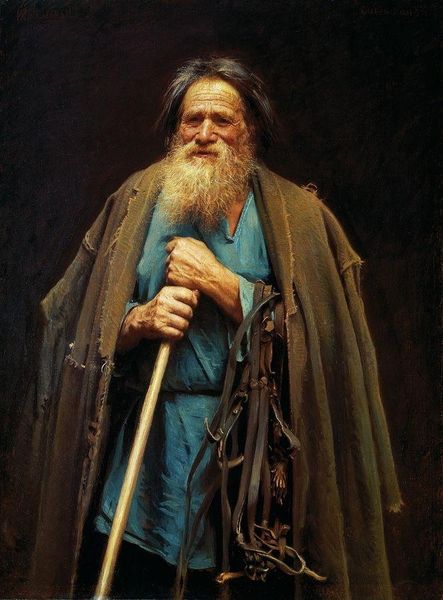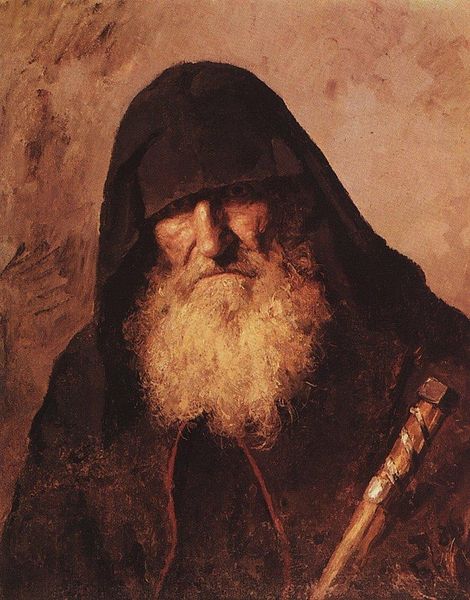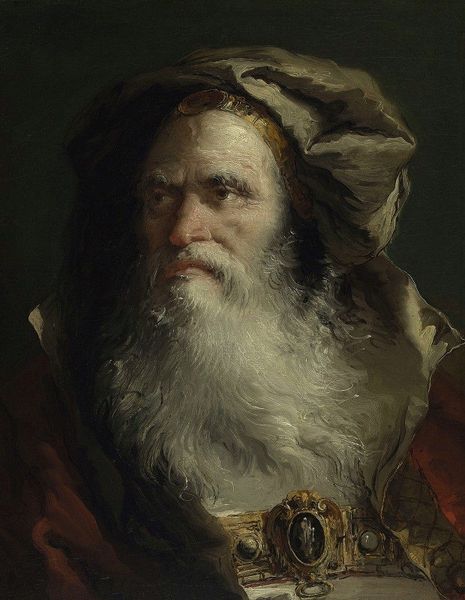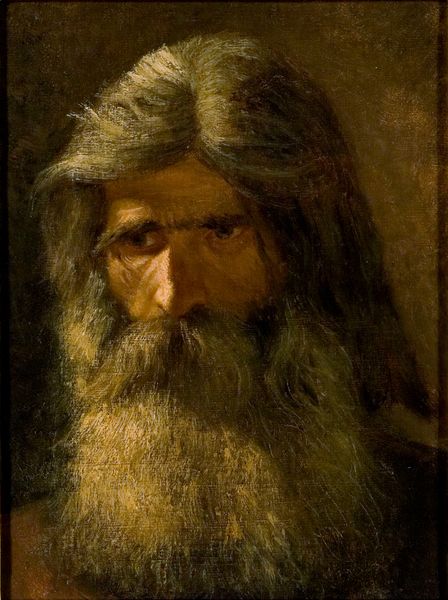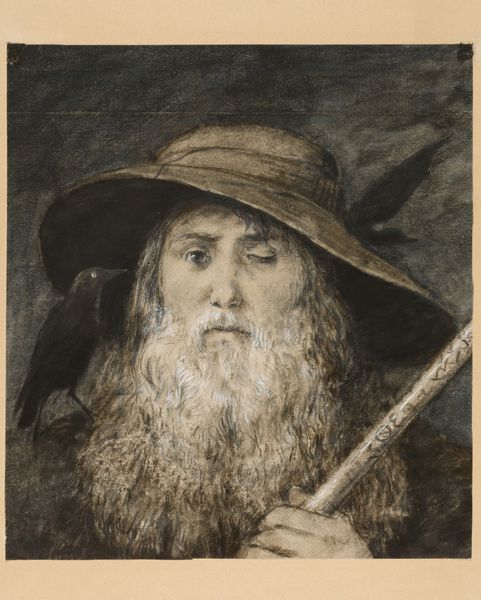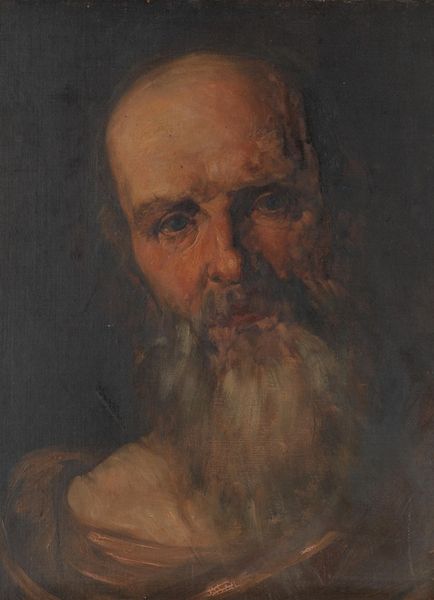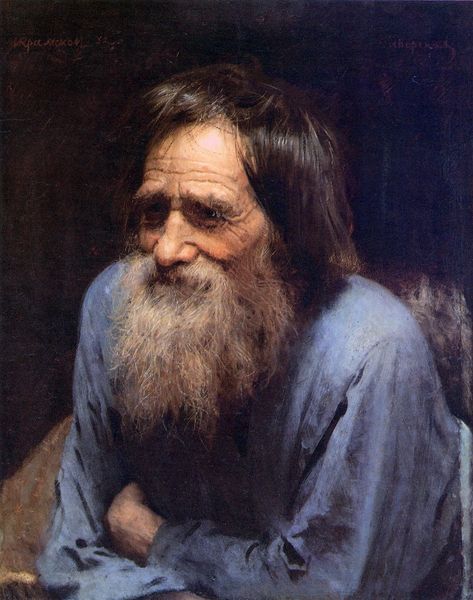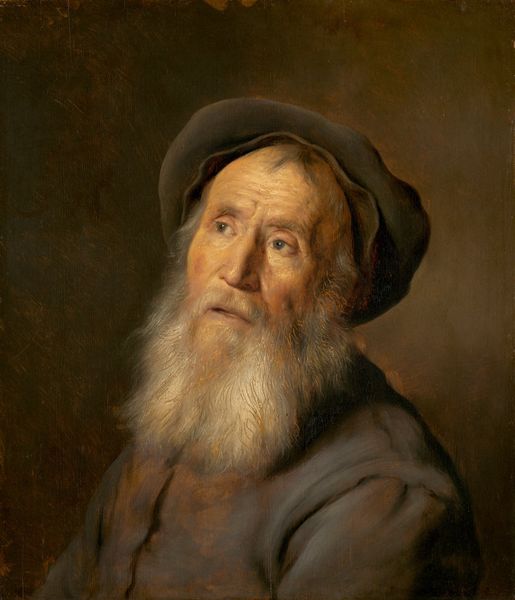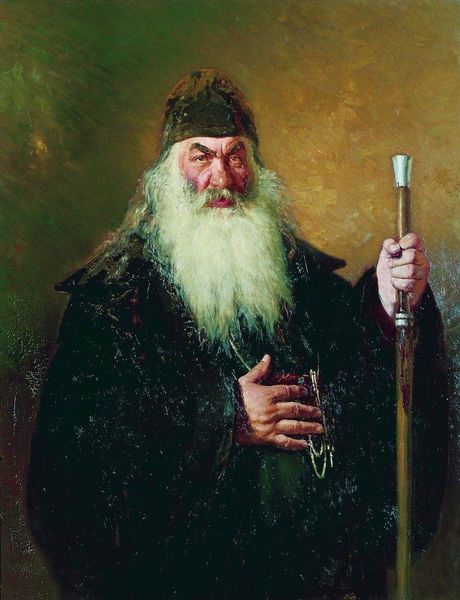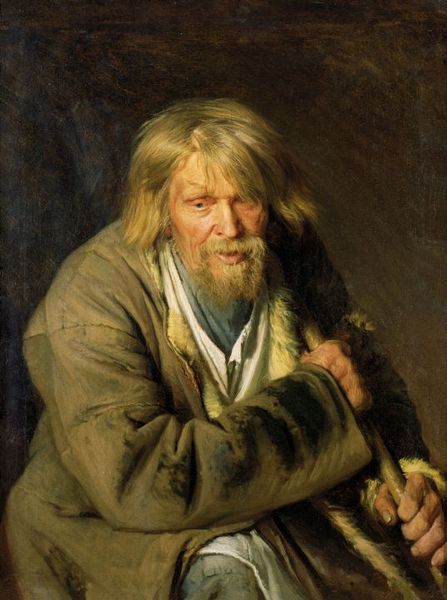
Copyright: Public domain
Curator: Painted by Ivan Kramskoy in 1874, this is "Woodsman." It's currently housed at the Tretyakov Gallery in Moscow. Editor: Immediately, I’m struck by the directness of his gaze and that striking beard, it looks to be the color of dried leaves in the autumn. There's a melancholy to this figure, an almost biblical solemnity in his posture and muted attire. Curator: Interesting you say "biblical." Kramskoy was interested in the peasant class, framing the common worker within larger narratives of social change. Remember that he challenged the academic artistic norms of the time and portrayed figures from all levels of society, often imbued with symbolic weight tied to national identity and societal transformation. What symbols do you discern within him? Editor: His beard is impossible to miss; an attribute or symbol linked with wisdom, virility, even a kind of wild, untamed nature and an explicit representation of a figure not tamed by civilization and all its inherent hierarchies. It speaks to the traditions of masculinity within a rural setting, not to mention its sheer visual impact. He seems tethered to an older world. Curator: I agree, the beard, almost like a tapestry of survival. There is more to his green smock too. His drab clothing, those utilitarian fabrics, speak to the difficult lives lived by the common person. But, rather than depict the subject solely as impoverished or lacking agency, Kramskoy finds nobility, hinting at hidden strengths within their social fabric and even potential revolt within Russia at the time. Editor: Indeed, notice the line of his jaw, the set of his shoulders, though his clothes are common, it still imparts a stoic perseverance through imagery that hints at a latent spiritual awareness. You see him not so much as a passive receiver of fate but one engaged with a hidden inner journey or quiet personal pilgrimage of his own. He stands firmly rooted. Curator: Yes, it's an intricate dance between realism and romanticism, offering a rich lens to consider issues of labor, value, and social justice that resonated then and now. Editor: A fitting portrayal, then. Through visual cues and symbol, the painting makes its message far more affecting. Curator: I appreciate the emphasis on these subtleties; they challenge dominant narratives, especially as art becomes an increasingly critical voice. Editor: And in doing so it lets us to access both history and feeling at the same time.
Comments
No comments
Be the first to comment and join the conversation on the ultimate creative platform.

